Invasive Blood Pressure Sensors: A Comprehensive Overview
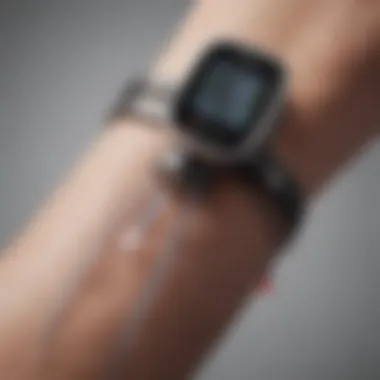
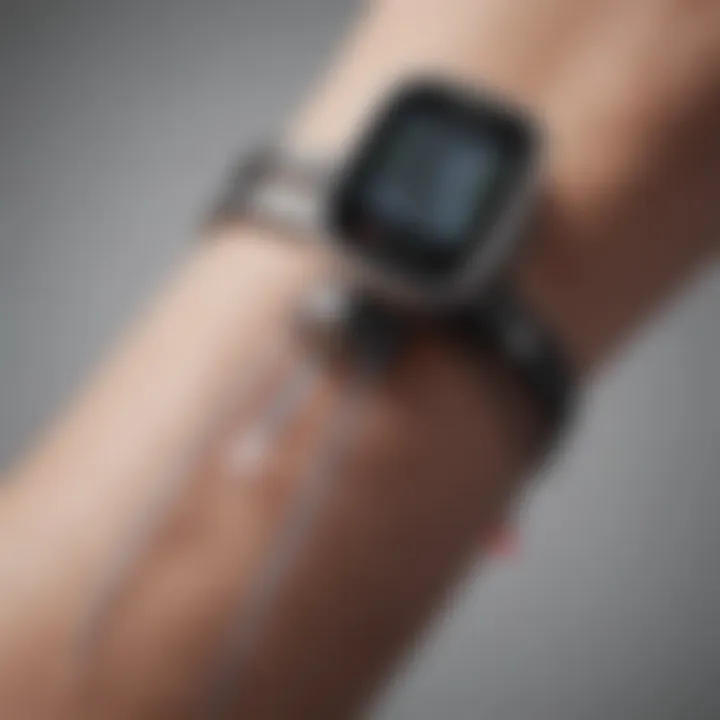
Prelims
Invasive blood pressure sensors represent a critical advancement in medical monitoring technology. These devices provide real-time, accurate measurements of blood pressure, allowing for immediate clinical decisions. This article explores the design, functionality, applications, and future directions of invasive blood pressure sensors. Understanding these aspects is essential for healthcare professionals and researchers involved in critical care and surgical settings.
Research Overview
Summary of Key Findings
Invasive blood pressure sensors utilize a catheter connected to a transducer to measure blood pressure directly within the arterial system. Key findings from recent studies emphasis the following points:
- Accuracy and Reliability: Invasive sensors offer higher accuracy compared to non-invasive methods, particularly in unstable patients.
- Clinical Impact: Continuous monitoring improves patient outcomes in intensive care and during major surgeries.
- Innovation: Ongoing developments focus on miniaturization and integration with other monitoring systems.
These findings underscore how essential invasive blood pressure monitoring is in modern medical practice. The sensors yield insights that non-invasive methods may not provide, particularly during critical events.
Relevance to Current Scientific Discussions
The significance of invasive blood pressure sensors extends beyond mere clinical measurements. They contribute to broader discussions on patient safety, technology adoption in healthcare, and advancements in telemedicine. Current debates often revolve around:
- How to improve patient outcomes through technology integration.
- Addressing challenges related to sensor accuracy in varying patient demographics.
- Ethical considerations in the use of invasive monitoring in specific populations.
These topics highlight the importance of continuous innovation and research in invasive monitoring techniques.
Methodology
Research Design and Approach
A comprehensive review was conducted to gather existing literature regarding invasive blood pressure sensors. The approach combined both qualitative and quantitative data, sourced from clinical studies, technical journals, and conference proceedings. This multi-faceted strategy ensures a thorough understanding of the topic.
Data Collection and Analysis Techniques
Data were collected through systematic searches in databases such as PubMed and Google Scholar. Analysis techniques included:
- Meta-analysis for quantitative data to determine overall accuracy.
- Content analysis for qualitative insights into clinical applications.
Through these methods, the research aimed to capture a broad yet detailed perspective on invasive blood pressure sensors, highlighting their importance and influence in clinical settings.
Prelude to Invasive Blood Pressure Monitoring
Invasive blood pressure monitoring has emerged as a critical component of modern medical practice. The ability to continuously and accurately measure blood pressure can have a profound impact on patient outcomes, especially in high-stakes environments like intensive care units and during surgical procedures. Recognizing the importance of this method is essential for healthcare professionals and researchers alike since it paves the way for informed decision-making and timely interventions.
Definition and Purpose
Invasive blood pressure monitoring involves the use of specialized equipment to measure blood pressure directly within the vascular system. This method typically employs arterial catheters that provide real-time readings of systolic, diastolic, and mean arterial pressure. The primary purpose of this technique is to obtain precise measurements that can inform clinical decisions, particularly in critically ill patients whose hemodynamic status may be unstable.
Utilizing invasive sensors allows for continuous monitoring, which is invaluable in situations where fluctuations in blood pressure could indicate complications or the need for immediate therapeutic action. By transcending the limitations of non-invasive techniques, which can be affected by factors such as patient movement or skin conditions, invasive monitoring enables a more reliable assessment of cardiovascular function.
Historical Context
The evolution of invasive blood pressure monitoring has been shaped by advances in technology and medical understanding. In the early 20th century, pioneer clinicians began experimenting with direct arterial measurements. Initially, these techniques lacked accuracy and reliability, often leading to variability in readings. However, as medical instrumentation evolved, so did the capabilities of blood pressure monitoring systems.
By the mid-20th century, with the introduction of disposable catheters and improved transducer technologies, invasive monitoring gained traction in clinical settings. This period marked a significant shift towards greater recognition of the importance of precise blood pressure control in diverse patient populations. Over the decades, continual refinements in device design and integration with monitoring systems have propelled the practice to its current state—one where it serves as an integral tool in patient management.
Types of Invasive Blood Pressure Sensors
Understanding the various types of invasive blood pressure sensors is crucial for anyone engaged in the medical field. These devices are essential for monitoring a patient's hemodynamics accurately, allowing for timely interventions when necessary. The importance of knowing the types of sensors lies not only in their functionality but also in their specific applications across different clinical settings. Each type serves a unique purpose and offers distinct benefits, which must be considered when choosing the right sensor for a patient.
Arterial Catheters
Arterial catheters provide continuous measurements of blood pressure directly from an artery, making them a preferred choice in many intensive care situations. These catheters typically enter through radial or femoral arteries and connect to pressure transducers that relay real-time data. One significant advantage of arterial catheters is their ability to capture rapid changes in blood pressure. This capability is vital during surgical procedures or in emergency situations, where patient condition can change quickly.
However, the insertion of an arterial catheter is invasive and requires skill. There are risks of complications such as infection, thrombosis, or bleeding at the insertion site. Healthcare professionals must weigh these risks against the benefits of obtaining continuous monitoring data. Training and adherence to established protocols can mitigate some of these risks.
Central Venous Pressure Sensors
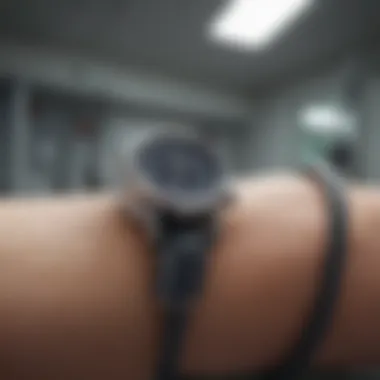
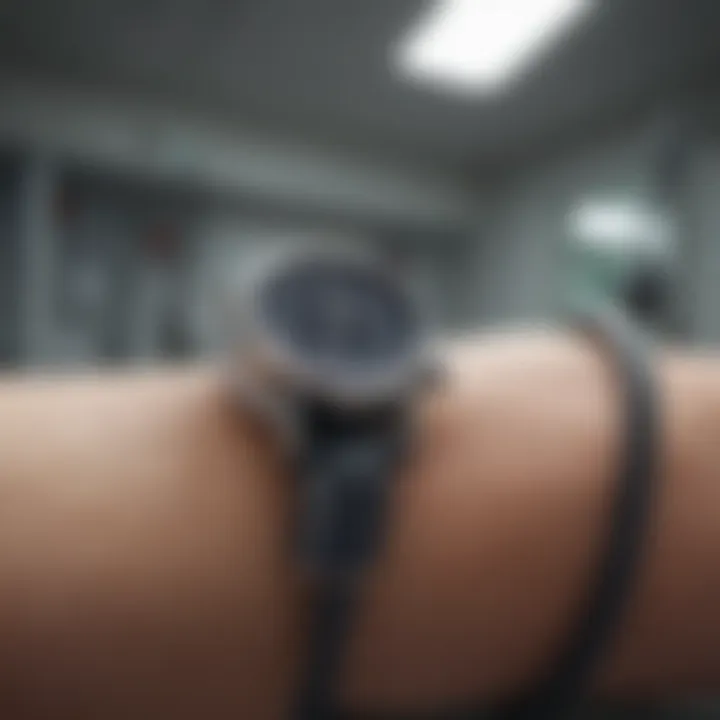
Central venous pressure sensors measure the pressure in the central veins, often through catheters placed in the internal jugular or subclavian veins. This type of monitoring is particularly valuable in assessing a patient's fluid status and right heart function. In critical care settings, the information gathered can guide fluid management and medication administration.
Central venous pressure measurements can provide insights into a patient’s cardiac preload, helping clinicians make informed decisions regarding interventions. Much like arterial catheters, there are risks associated with their use, including infection and injury to surrounding structures. Hence, proper placement and management are critical to minimizing complications.
Other Specialized Sensors
Aside from arterial catheters and central venous pressure sensors, the landscape of invasive blood pressure monitoring includes specialized sensors, each designed for specific use cases. These may include pulmonary artery catheters, which provide information on pulmonary artery pressure, and devices designed for specific surgical situations.
The commands from these specialized pressure sensors can vary significantly, from depth of insertion to the need for periodic calibration. Their advantages often include detailed insights into the cardiovascular status, which may be crucial during complex surgeries or in patients with severe cardiac conditions.
Despite their benefits, these devices could be subject to technical issues or complications from insertion. As always, careful consideration and appropriate training are paramount in utilizing these tools effectively.
Ultimately, the choice of invasive blood pressure sensor depends on the clinical context, patient condition, and the expertise of the medical team involved.
In summary, an understanding of the various types of invasive blood pressure sensors and their applications is essential for healthcare providers. Each type has its unique strengths and considerations, which must be evaluated to ensure optimal patient care.
Mechanisms of Operation
Understanding the mechanisms of operation for invasive blood pressure sensors is critical. These mechanisms enhance the accuracy and reliability of the readings. They bridge the gap between physiological changes in the body and numerical data that reflects the patient’s hemodynamics. The efficiency of blood pressure monitoring directly influences clinical decision-making, thus emphasizing the importance of these mechanisms.
Transduction Processes
Transduction processes are at the heart of how blood pressure sensors operate. These processes convert physical pressure into an electrical signal, a principle that underpins many medical devices. The most common type of sensor used in this application is the pressure transducer. Invasive blood pressure monitoring relies on a catheter connected to a pressure transducer inserted into the bloodstream.
There are various types of pressure transducers such as piezoelectric and capacitive transducers. Piezoelectric transducers utilize materials that generate an electric charge in response to applied mechanical stress. On the other hand, capacitive transducers detect pressure by measuring changes in capacitance between two plates, which varies with the distance between them.
These processes must be precisely calibrated to ensure accurate readings. Each type of transducer carries unique advantages and disadvantages in terms of sensitivity, linearity, and response time. Therefore, selecting the appropriate transducer type is crucial based on the specific medical context, such as during a critical surgery or in continuous outpatient monitoring.
Signal Processing Techniques
Once the pressure transducer converts the pressure signal into an electrical signal, it is crucial to process this signal effectively. Signal processing techniques enhance the clarity and usability of the data collected. These techniques involve filtering, amplification, and digital conversion, transforming raw data into meaningful information.
Filtering processes, like low-pass filtering, help eliminate noise from external sources, which could distort the blood pressure readings. This is especially relevant in dynamic environments such as operating rooms or emergency departments.
After filtering, the signal often requires amplification. A small electrical signal resulting from the pressure transducer needs to be amplified for precise measurement. The amplified signal can then be converted into digital format, allowing for advanced monitoring systems to analyze the data. Digital signal processing opens new avenues for applying algorithms that can identify trends or abnormalities in blood pressure readings.
Overall, the integration of effective signal processing techniques leads to improved accuracy in measuring blood pressure. This accuracy is vital for patient management, enabling healthcare professionals to make informed decisions swiftly.
"The effectiveness of invasive blood pressure monitoring fundamentally depends on the mechanisms of transduction and signal processing. Their advancements can significantly enhance patient outcomes in critical and surgical settings."
Clinical Applications
Invasive blood pressure sensors play a critical role in various clinical settings. Their ability to provide precise and real-time measurements is vital for patient management. Understanding the clinical applications of these sensors enhances their significance in modern healthcare. They are particularly valuable in environments where blood pressure management is crucial for patient survival and recovery.
Critical Care Settings
In critical care, invasive blood pressure monitoring is essential. Patients in intensive care units often experience hemodynamic instability. These individuals may have complex medical issues requiring constant evaluation of cardiovascular status. Arterial catheters are commonly employed in these situations, allowing for continuous blood pressure readings.
This real-time data helps medical staff make quick decisions. Nurses and doctors can adjust medications or fluid treatments based on the pressures observed. Invasive monitoring also aids in detecting trends. If blood pressure drops suddenly, healthcare providers can respond without delay. The ability to rapidly adjust treatment can be life-saving.
Surgical Interventions
During surgeries, especially major operations, invasive blood pressure sensors are vital. The anesthesia team relies on accurate blood pressure data to ensure patient safety. Any fluctuation can indicate complications that require immediate intervention.
Invasive monitoring allows for tight control of blood pressure throughout the surgical procedure. Surgeons need this data to maintain optimal perfusion to vital organs. For example, if the blood pressure decreases, it signals that the body may not get adequate oxygen. This information circulates to the surgical team so adjustments can be made instantly.
Management of Chronic Conditions
Patients with chronic conditions benefit significantly from invasive blood pressure monitoring. Conditions such as heart failure or severe hypertension require ongoing assessment. By using sensors, clinicians can obtain detailed information about a patient's blood pressure over time.
This continuous data enables healthcare providers to make personalized treatment plans. It allows for adjusting medications or therapies based on the individual’s response. Moreover, chronic patients can experience episodic crises where blood pressure spikes or drops dramatically. Immediate access to accurate data helps in managing these events promptly and effectively.
Advantages of Invasive Blood Pressure Sensors

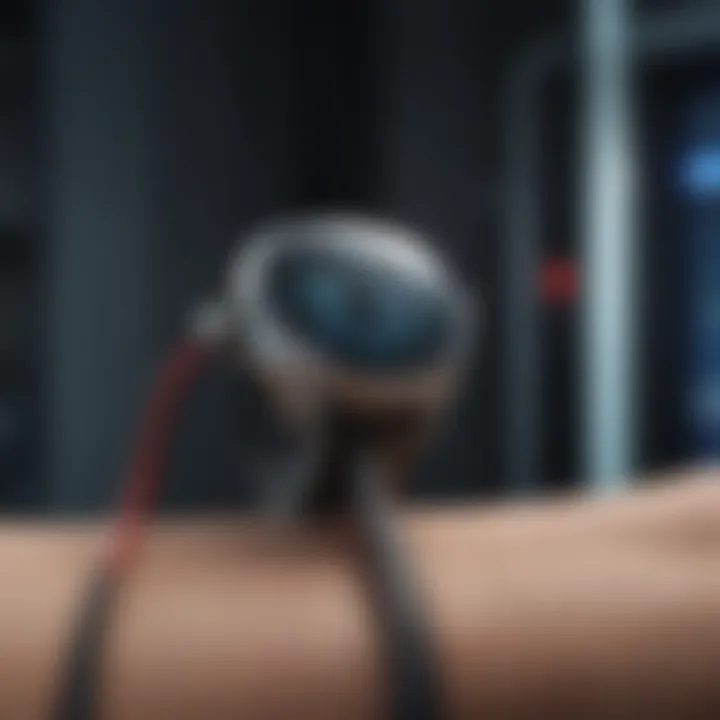
Invasive blood pressure sensors have become crucial tools in modern medicine. Their advantages are significant, particularly in critical and surgical settings. The primary strengths of these sensors include the capability for continuous monitoring and the precision in measurements. Each of these advantages plays an important role in patient care and management.
Continuous Monitoring
One of the foremost advantages of invasive blood pressure sensors is the ability to provide continuous monitoring of blood pressure. Traditional Non-invasive methods often rely on periodic cuff measurements, which can miss critical fluctuations. Continuous blood pressure monitoring enables healthcare providers to observe patients in real-time, allowing for immediate response to any changes in their condition.
This is especially vital in critical care units where patients are at risk of sudden changes in hemodynamics. For instance, during surgical procedures, anesthesiologists can monitor a patient’s blood pressure continuously. This data allows for timely interventions if the patient's vital signs drift into alarmingly low or high levels.
Additionally, continuous monitoring facilitates better decision-making. More comprehensive data leads to more informed treatment plans tailored to the needs of individual patients. Such capabilities enhance the overall quality of care and can potentially improve outcomes.
Precision in Measurements
Another significant advantage of invasive blood pressure sensors is their precision in measurements. Compared to non-invasive methods, invasive sensors offer greater accuracy in measuring blood pressure. The sensors are placed directly within the vascular system, allowing them to provide real-time and accurate readings, unaffected by external variables that can alter results from non-invasive methods.
Precision is crucial in various clinical scenarios, such as managing patients with severe hypertension or those in critical care. Inaccurate measurements can lead to inappropriate treatment decisions, which may worsen a patient’s condition. Invasive blood pressure monitoring ensures that the data collected reflects the true hemodynamic status of the patient.
In contrast to traditional methods, which can be influenced by factors like patient movement or cuff size, invasive methods deliver consistent results.
More accurate blood pressure readings lead to better informed medical decisions and reduced medical risks.
In summary, the advantages of invasive blood pressure sensors lie in their ability to provide continuous, accurate, and reliable data. These features vastly improve the management of patients in numerous clinical situations, ensuring that healthcare providers have the necessary information at their fingertips.
Limitations and Risks
Understanding the limitations and risks associated with invasive blood pressure sensors is crucial for healthcare professionals. These sensors play a vital role in monitoring patients, but they are not without their challenges. Acknowledging these limitations helps practitioners make informed decisions about their use and the care of patients.
Potential Complications
One of the primary concerns with invasive blood pressure monitoring is the potential for complications. These complications can arise from the placement of the catheter or from the device itself. Common issues include:
- Infection: The insertion of catheters increases the risk of infection, particularly if proper sterile techniques are not utilized. Healthcare facilities must enforce strict protocols to minimize this risk.
- Hemorrhage: There is a possibility of bleeding at the insertion site. If a catheter is placed in an arterial location, and if it is not done properly, excessive bleeding could occur, potentially leading to serious consequences.
- Thrombosis: The presence of a foreign object in the bloodstream can lead to clot formation. This can obstruct blood flow and necessitate further interventions.
- Vascular Injury: The placement of the sensor might inadvertently damage surrounding tissues or blood vessels, which could lead to lasting complications.
These potential complications underscore the importance of careful patient selection and monitoring procedures to mitigate risks effectively.
Technical Failures
Technical failures represent another critical aspect that can affect the reliability of invasive blood pressure sensors. Even the most advanced technologies can encounter issues that undermine their efficacy. Common technical failures include:
- Calibration Errors: Sensors need accurate calibration to function properly. Errors in calibration can result in inaccurate readings, which could lead to misdiagnosis or inappropriate treatment.
- Malfunctioning Equipment: Like any medical device, blood pressure sensors can malfunction. Failure in sensing elements or communication devices may result in loss of function.
- Obstruction and Clot Formation: If blood clots form within the sensor or catheter, these can obstruct flow and prevent accurate readings, necessitating maintenance or replacement of the device.
- Data Transmission Issues: In cases where sensors are integrated with digital monitoring systems, delays or failures in data transmission can hinder timely decision-making.
Awareness of these potential technical failures supports the development of contingency plans in clinical settings, ensuring that healthcare providers are prepared for possible discrepancies in monitoring.
"Recognizing the limitations and risks associated with invasive blood pressure monitoring is vital for maintaining high standards of patient care."
In summary, while invasive blood pressure sensors are instrumental in critical care and surgical environments, their limitations and risks must be understood and respected. By being aware of the potential complications and technical failures, healthcare professionals can optimize the utilization of these devices while maintaining patient safety.
Regulatory Standards and Guidelines
In the domain of invasive blood pressure monitoring, adherence to regulatory standards and clinical guidelines is essential. These frameworks ensure not only the safety and effectiveness of devices but also the overall quality of patient care. The importance of regulatory compliance cannot be understated, as it plays a critical role in fostering trust between manufacturers, healthcare providers, and patients.
Global regulatory requirements and clinical practice guidelines create a standardized approach to the implementation and use of invasive blood pressure sensors. Compliance with these regulations helps to mitigate risks associated with device usage while enhancing clinical outcomes. Additionally, they provide a basis for best practices among healthcare professionals, which ultimately leads to more reliable patient management.
Global Regulatory Requirements
Several major regulatory bodies establish the necessary guidelines to govern the use of invasive blood pressure sensors across different countries. The most noteworthy among these include the U.S. Food and Drug Administration (FDA) and the European Medicines Agency (EMA). Each entity sets out specific requirements that device manufacturers must satisfy before their products can be marketed.
- Pre-market Approval: Devices must undergo rigorous testing, including clinical trials, to demonstrate safety and efficacy.
- Quality Control Systems: Manufacturers need to maintain stringent quality management protocols, ensuring consistency in production quality.
- Post-market Surveillance: Ongoing monitoring is essential to identify any long-term issues with device performance.
These requirements create a comprehensive framework ensuring that invasive blood pressure monitoring devices are safe for clinical use. Adhering to such global standards encourages innovation while safeguarding patient health.
Clinical Practice Guidelines
In addition to regulatory standards, clinical practice guidelines offer actionable insights for healthcare professionals involved in invasive blood pressure monitoring. These guidelines are often developed by expert panels and professional organizations based on the latest evidence and best practices in the field.
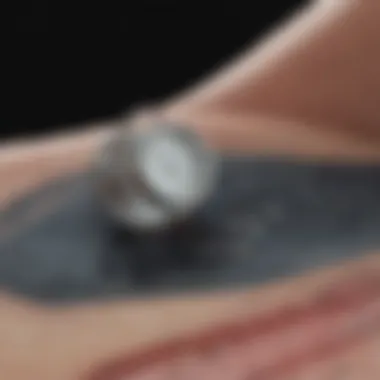
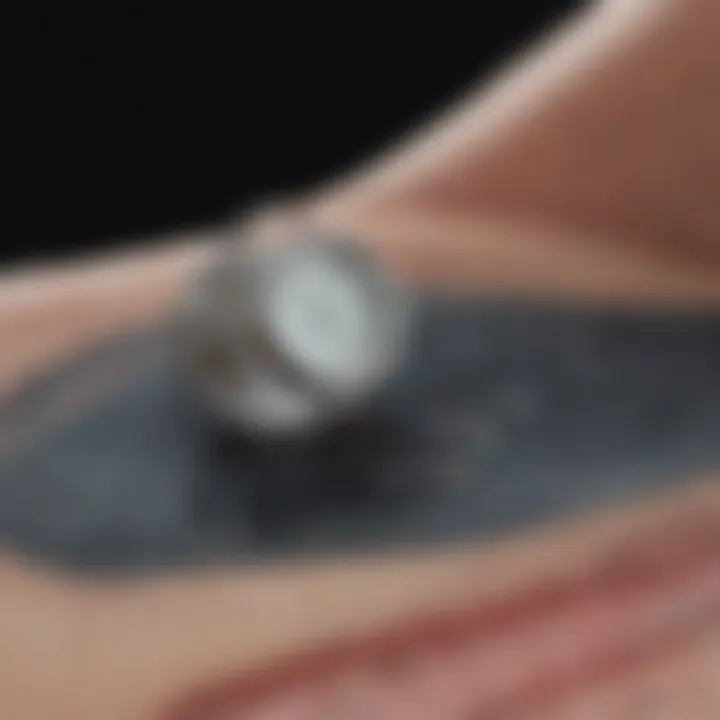
- Device Selection: Guidelines often specify criteria for selecting appropriate invasive blood pressure sensors based on patient conditions and clinical setting.
- Training and Competence: Recommendations highlight the necessity for healthcare providers to receive adequate training on the use and potential complications of these devices.
- Monitoring Protocols: The guidelines provide frameworks for monitoring techniques, including frequency, location, and equipment calibration.
Implementing these clinical guidelines helps in minimizing human error and enhances patient safety. > "Adhering to standardized protocols not only improves patient outcomes but also fosters a culture of accountability within clinical teams."
Well-structured regulatory standards and clinical guidelines not only assist in the safe use of invasive blood pressure sensors but also promote consistent practice across various medical environments. They serve as vital tools in advancing the field while providing healthcare professionals with the necessary resources to deliver high-quality care.
Technological Innovations
Technological innovations play a crucial role in the evolution of invasive blood pressure sensors. Advances in this field have been pivotal in enhancing accuracy, usability, and overall patient outcomes. As medical technology progresses, the focus on improving these sensors goes beyond just measuring blood pressure. It encompasses various dimensions including miniaturization, data integration, and user-friendly interfaces.
Miniaturization of Sensors
The miniaturization of sensors has transformed the landscape of invasive blood pressure monitoring. Smaller sensors can be integrated into less invasive devices, resulting in reduced patient discomfort while maintaining measurement accuracy. This innovation allows for better compliance in patients, especially in settings like critical care or long-term monitoring.
Additionally, miniaturized sensors enable the portability of monitoring equipment. Mobile devices can now house advanced sensor technology, facilitating remote patient monitoring. The smaller size also reduces the risks associated with catheter placement and enhances the overall workflow in clinical settings.
Miniaturization not only makes the devices more comfortable for the patient, but it also opens the door for new opportunities in personalized healthcare.
Integration with Digital Health Technologies
Integration with digital health technologies is another significant aspect of recent innovations. Modern invasive blood pressure sensors can now communicate with various digital platforms. This means that real-time data can be transferred to electronic health records, providing clinicians with immediate access to crucial patient information.
This connectivity allows for better decision-making and timely interventions. Moreover, it supports advanced analytics that can predict patient trends and complications. Integration with other devices, such as wearables, can provide a comprehensive view of a patient's cardiovascular status.
The implications of this integration are profound. Clinicians can now monitor patients remotely, reducing hospital admissions and ensuring continuous care even outside of traditional healthcare settings. However, it is essential to address data security and privacy concerns as reliance on digital health technology increases.
The ongoing technological innovations continue to shape the future of invasive blood pressure monitoring. By focusing on miniaturization and integration with digital health technologies, the medical field is moving toward more effective and patient-centered care.
Future Directions and Research Opportunities
Invasive blood pressure sensors are critical in current medical practices. However, the future of these sensors is equally compelling, revealing exciting avenues for research and development. This section explores key aspects of emerging trends in sensor technology and the potential for non-invasive alternatives. There is significant momentum toward enhancing accuracy, reducing complications, and exploring safer patient monitoring methods.
Emerging Trends in Sensor Design
Recent advancements in sensor design focus on enhancing the accuracy and reliability of blood pressure measurements. Innovations include miniaturization and integration of smart technologies. Miniaturization allows for better patient comfort and easier insertion processes. Smaller sensors can be placed more easily, leading to fewer complications.
Smart technology integration is another promising trend. Sensors equipped with advanced algorithms can analyze data in real-time. This can lead to faster clinical decision-making and improved patient outcomes. Furthermore, innovations such as wireless sensors facilitate remote monitoring, allowing healthcare professionals to track patients’ conditions without being physically present.
"The ongoing evolution in sensor technologies promises a future where monitoring is seamless and patient-centric."
Another significant area of development is biocompatible materials. These materials can minimize the body's rejections and reduce the risk of infections. Using advanced materials can encourage longer sensor use without compromising safety or accuracy. A key focus will be ongoing research to discover or develop new biocompatible substances that enhance sensor performance.
Potential for Non-Invasive Alternatives
While invasive sensors provide precise readings, the healthcare community is increasingly interested in non-invasive options. The potential for non-invasive alternatives represents a fundamental shift in how blood pressure monitoring may operate in the near future. These alternatives aim to achieve accurate monitoring without the complications associated with invasive methods.
One promising technology involves the use of photoplethysmography (PPG). PPG utilizes light-based sensors to detect changes in blood volume. This can provide valuable blood pressure data while ensuring patient comfort and safety. Likewise, developments in wearable technology aim to capture continuous blood pressure readings from an external device.
The advantages of non-invasive methods also extend to patient experience. By reducing the psychological barriers of invasive procedures, patients may be more amenable to regular monitoring and engagement with their health care.
However, it is essential to clarify that while these technologies show potential, they also come with challenges. Ensuring accuracy comparable to invasive methods is crucial. Further, addressing these challenges through rigorous clinical trials will be vital in establishing the credibility and reliability of non-invasive technologies.
In summary, the future of invasive blood pressure sensors holds numerous opportunities for innovation. From advanced sensor design to the exploration of non-invasive alternatives, ongoing research will profoundly impact how healthcare providers monitor and manage patients’ blood pressure.
Closure
In the realm of invasive blood pressure monitoring, the conclusion draws together the multifaceted aspects explored throughout the article. The significance of utilizing these sensors cannot be understated. They not only provide continuous and precise monitoring of blood pressure, which is pivotal in critical care and surgical scenarios, but also play an essential role in managing chronic health conditions.
Summarizing Key Findings
Invasive blood pressure sensors, such as arterial catheters and central venous pressure sensors, have demonstrated their capabilities in delivering real-time data crucial for effective clinical decision-making. The technologies involved, including transduction processes and signal processing techniques, have evolved to enhance accuracy and reliability. Furthermore, this advances the standards of patient care, particularly in high-stakes environments where immediate interventions are required.
Acceptance of these devices comes with a clear understanding of their limitations and potential complications. Despite risks, the benefits far outweigh the concerns when appropriately applied. For instance, patients undergoing major surgeries or those in intensive care units often rely on continuous monitoring to ensure stable hemodynamic status.
Implications for Future Practice
Looking forward, the evolution of invasive blood pressure monitoring seems promising. There is a growing conversation regarding the integration of non-invasive alternatives, which could adapt to the demands of modern medical practice. Innovations in sensor designs present opportunities to create more streamlined and less invasive approaches, expanding access and usability in diverse clinical settings.
Healthcare professionals, researchers, and educators must remain adaptable and informed about these developments. The future may bring devices that leverage digital health technologies, potentially reshaping how patient data is gathered, interpreted, and utilized, thereby influencing patient outcomes significantly.
Ultimately, the essence of monitoring invasive blood pressure lies not only in the technology itself but in how healthcare practitioners integrate these insights into an overarching strategy for improving patient care.



